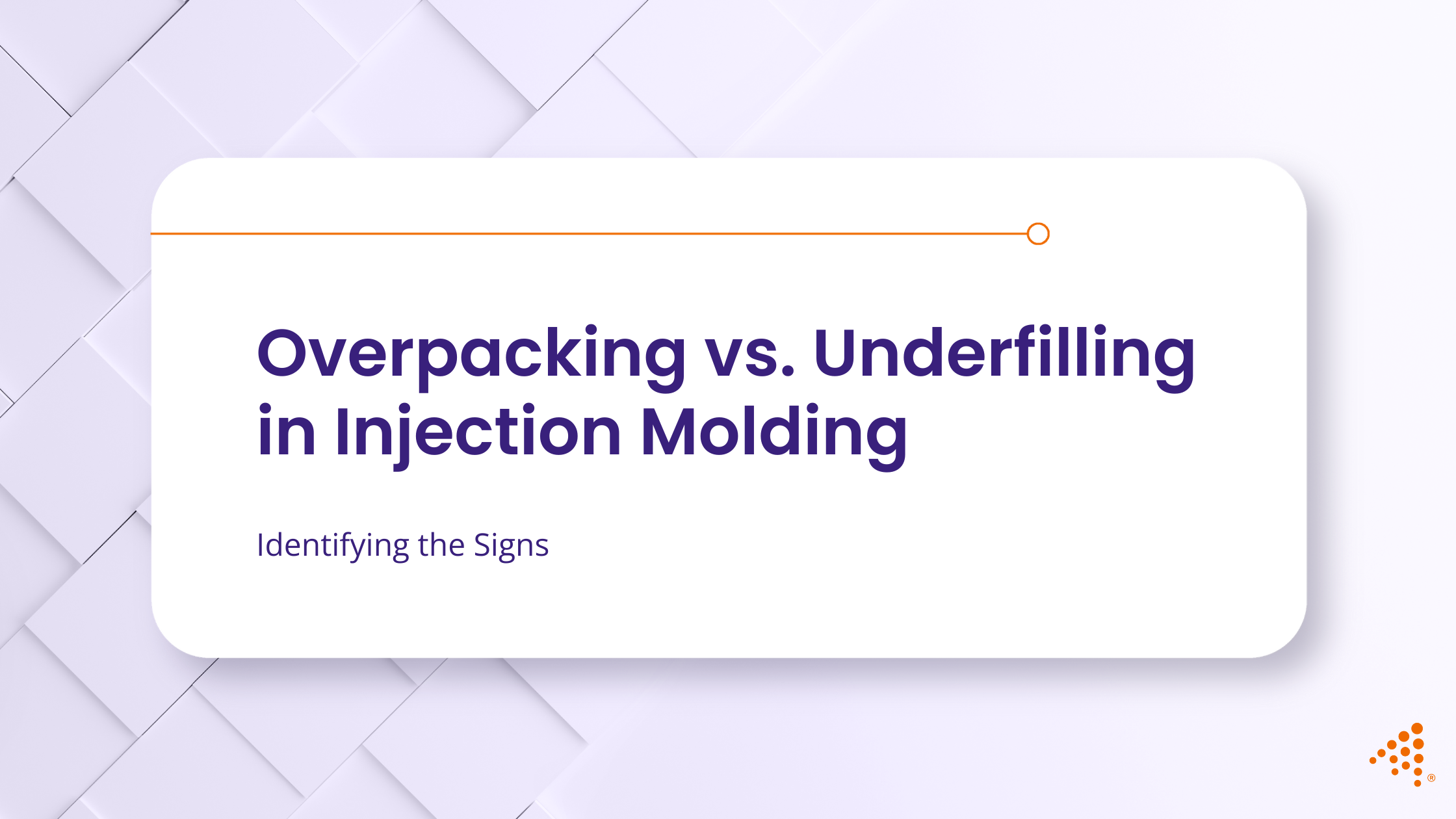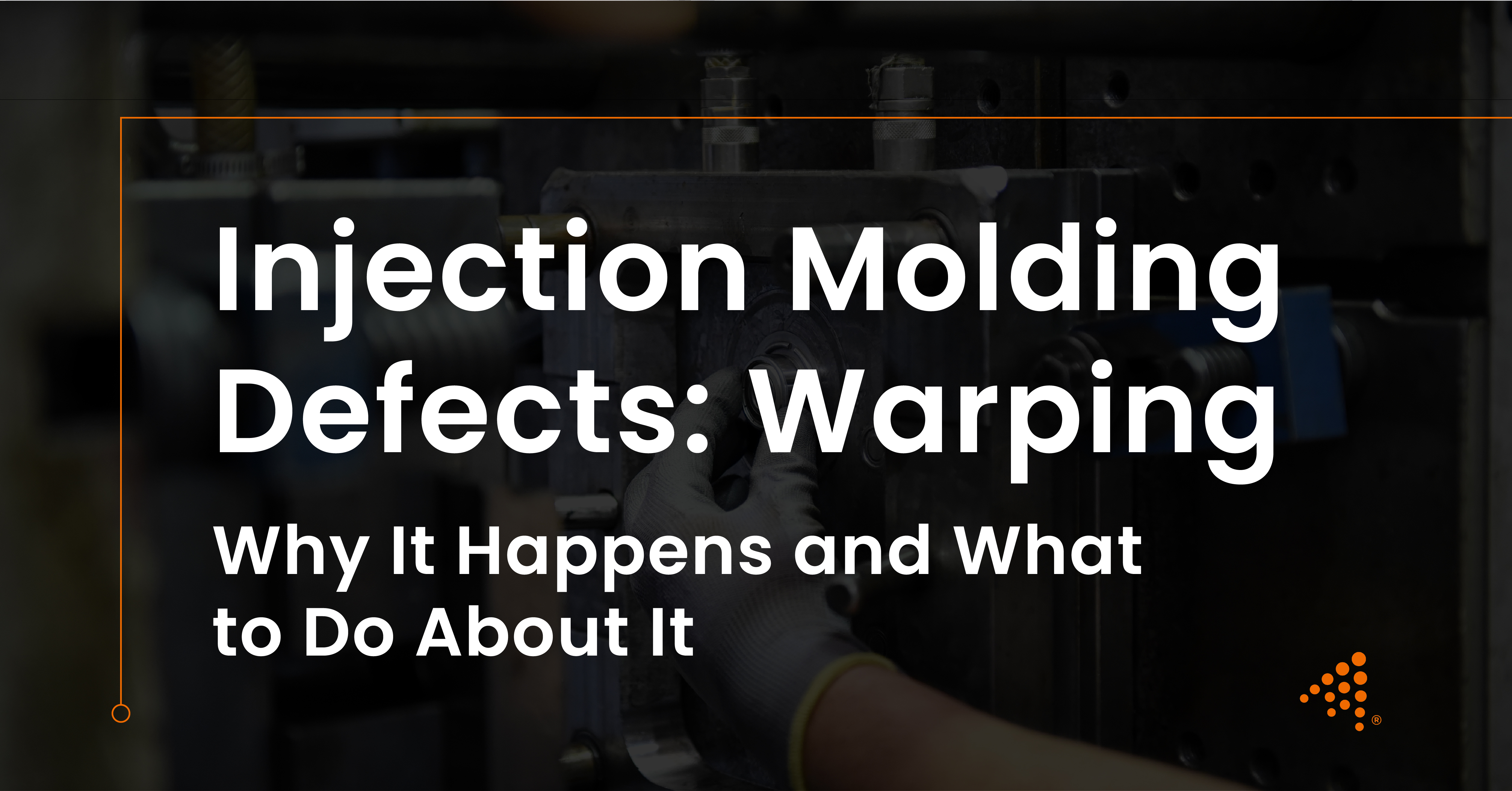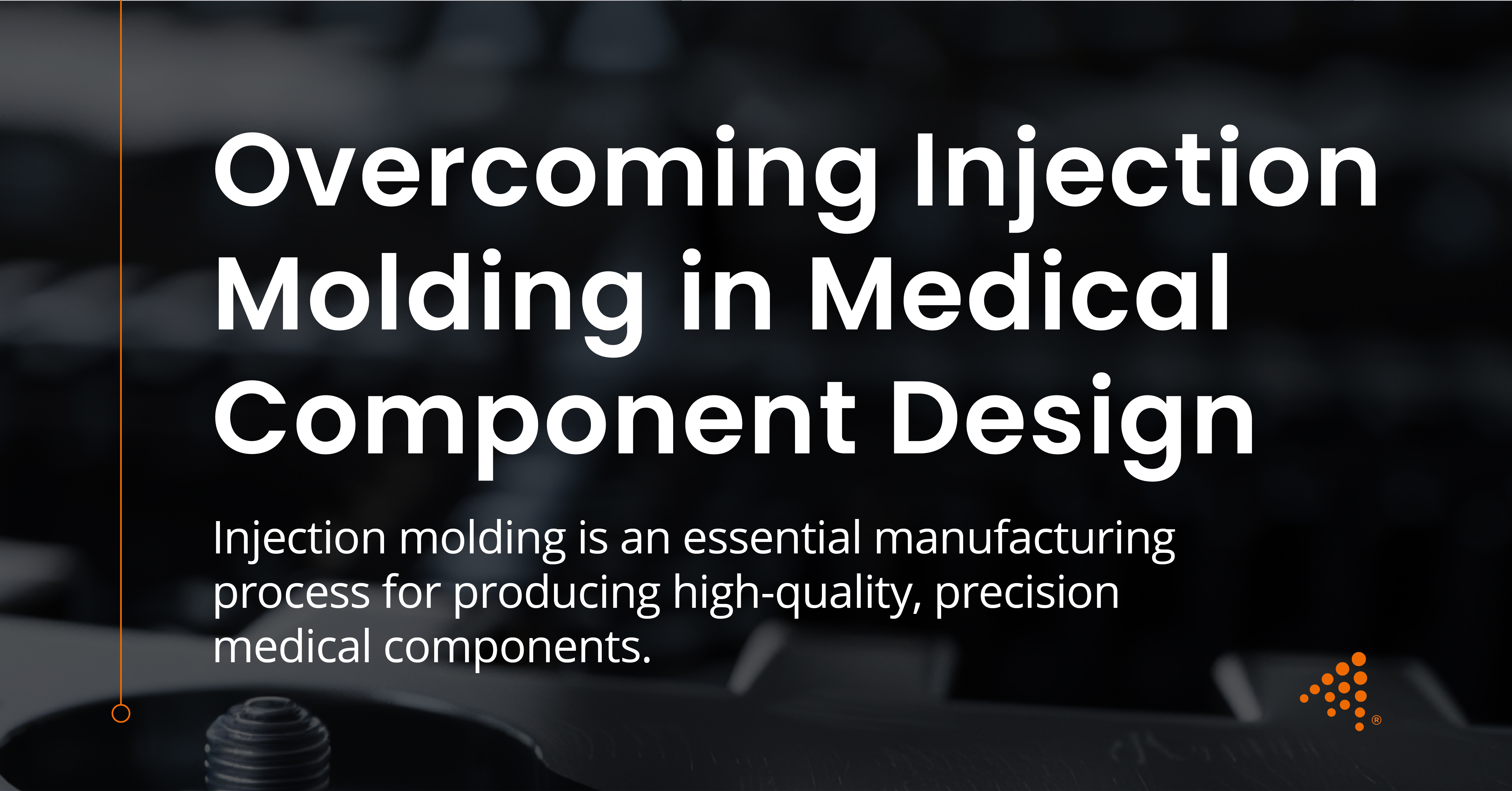Injection Molding Defects: Warping – Root Causes and Solutions
Dimensional accuracy is essential in the field of precision injection molding. However, even when a part is molded to exact specifications, it can...
4 min read
Nick Erickson : Nov 20, 2025 7:01:00 AM

Achieving a perfect, dimensionally accurate part with every cycle is the primary objective in plastic injection molding services. However, the path from molten resin to finished product is complex, and deviations from the ideal process can lead to various defects. Two of the most fundamental and telling issues are overpacking and underfilling. While they represent opposite ends of the spectrum in terms of material volume in the cavity, both can compromise a part's integrity and function. For industries with stringent requirements, such as healthcare and aerospace, effective design for manufacturing solutions and robust injection molding quality control are essential to ensure reliability.
Underfilling, often referred to as a "short shot," occurs when the molten plastic fails to fill the mold cavity during the injection phase. The result is an incomplete part, with sections missing, typically at the end of the material's flow path or in thin-walled areas. This defect is a clear indication that the melt solidified before it could reach every corner of the mold. An underfilled part is unusable and represents a direct loss of material, machine time, and productivity for any plastic injection molding company.
The root causes of underfilling generally trace back to insufficient material flow or premature cooling. This can happen for several reasons. The shot size, or the volume of plastic injected, might simply be too small to fill the entire cavity. Alternatively, the injection speed or pressure may be set too low, lacking the force needed to push the material to the farthest reaches of the mold before it cools and hardens.
Material viscosity plays a significant role; a resin that is too thick due to a low melt temperature will not flow easily. Similarly, a mold temperature that is too cool can cause the plastic to freeze upon contact, halting its advance. Mold design itself can also be a factor. When injection mold design services or Design for Injection Molding (DfIM) principles are not applied, issues like inadequate venting or undersized gates can restrict flow. Likewise, a lack of plastic part design optimization increases the chance of pressure drops that prevent complete filling.
Visually, underfilling is straightforward to identify. The part will be visibly incomplete, with missing features or unfilled sections. You may also observe sink marks or voids in thicker areas, where there wasn't enough material to compensate for shrinkage during cooling. In highly regulated markets, such as medical devices, preventing underfills requires both DFM for Medical Devices and strong collaboration with an experienced design and manufacturing company.
Read More About Overcoming Injection Molding Challenges in Medical Design
On the opposite end of the spectrum is overpacking. This condition arises when too much plastic material is forced into the mold cavity under excessive pressure. While it might seem that adding more material would be better than not enough, overpacking introduces its own set of serious problems. The excess material is compressed beyond what is necessary to fill the part's geometry, leading to high levels of internal stress and a host of potential defects.
Overpacking is primarily a result of excessive pressure or time during the injection and packing phases. If the injection pressure or the subsequent pack and hold pressure is set too high, it will continue to force material into the already-full cavity. This is often compounded by a hold time that extends long after the gate has frozen, or a shot size that is too large for the part's volume.
A high melt temperature can lower the resin's viscosity, making it "runny" and easier to force into microscopic gaps. A poorly balanced runner system in a multi-cavity mold can also lead to overpacking, where the cavities closest to the sprue fill first and become overpacked while the machine continues to inject material to fill the farther cavities.
The most common visual sign of overpacking is flash—a thin layer of excess plastic that squeezes out along the mold's parting line or around ejector pins. This happens because the immense pressure inside the cavity physically separates the two halves of the mold, creating a gap for the molten plastic to escape. Other indicators include parts that are difficult to eject, sometimes showing white stress marks or scuffs from the ejector pins. In some cases, even injection molding manufacturers struggle with warpage or dimensional instability caused by excessive molded-in stress.
While visual inspection provides strong clues, the most definitive way to differentiate between an underfilled and an overpacked part is by measuring its weight. A precise scale can reveal whether there is too little or too much material in the final component compared to a "golden" or ideal part.
A systematic approach, sometimes called a gate seal study, is highly effective. This process involves molding parts at incrementally longer hold times while keeping other parameters constant. The parts from each cycle are weighed and plotted on a graph.
By combining weight analysis with injection molding quality control and modern digital manufacturing solutions, manufacturers can diagnose problems with more precision.
Struggling with Injection Molding Defects?
Our experts provide data-driven solutions for underfilling and overpacking with end-to-end plastic injection molding services.
At Aprios, our expertise in scientific molding, plastic injection mold design services, and Design for Manufacturing Services allows us to diagnose and resolve complex issues like overpacking and underfilling. We support clients through prototype injection molding, rapid prototyping services, and 3D printed prototypes to test designs before scaling into production.
Our engineering-driven approach integrates injection molding tooling, precise tooling solutions, and custom manufacturing services to deliver consistent, high-quality results. For highly regulated industries, we specialize in Medical Injection Molding, ISO 13485 Injection Molding, and FDA-Compliant Manufacturing, ensuring that all parts meet the most demanding standards.

Dimensional accuracy is essential in the field of precision injection molding. However, even when a part is molded to exact specifications, it can...

Injection molding is an essential manufacturing process for producing high-quality, precision medical components where device reliability and patient...

Injection molding is a widely used manufacturing process for producing plastic parts in high volumes. One of the most critical components of this...